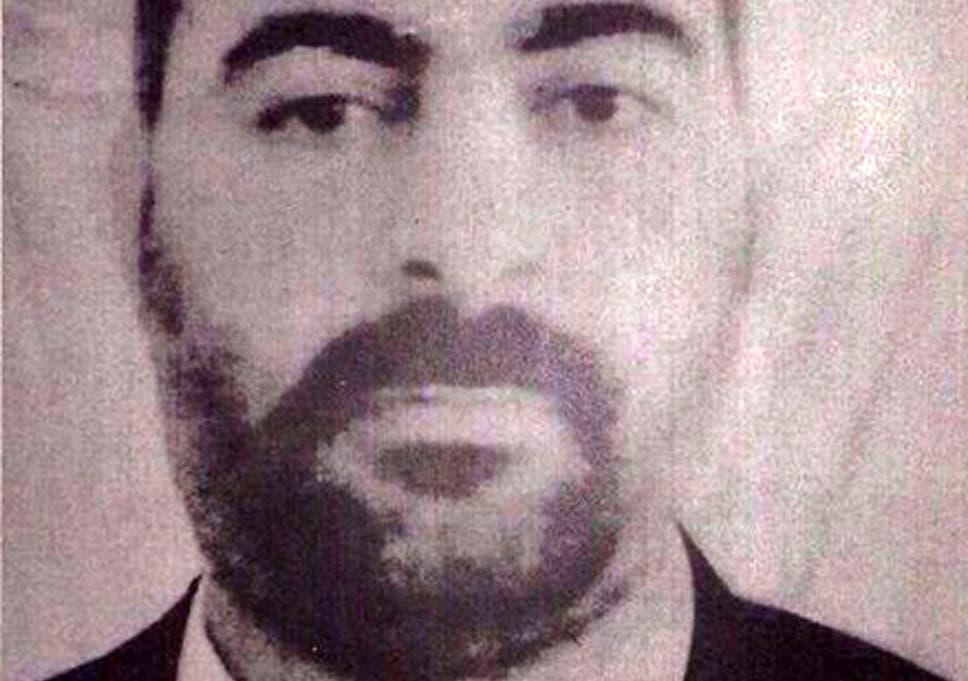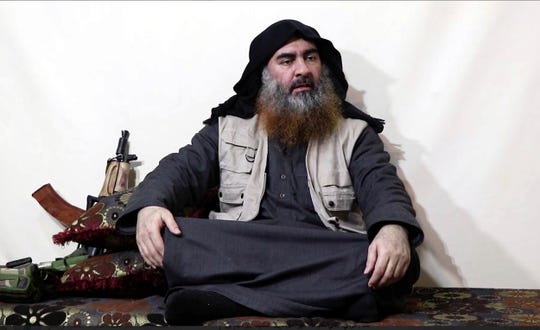Introducción.
Las “pequeñas unidades” atacando con objetivo limitado (una incursión profunda, la toma de una posición crítica, el rescate de una personalidad, una emboscada) constituyen un “sistema” militar cerrado. Esta condición impone unas características específicas en sus “interfases de acción” con el enemigo. Que no siempre son idénticas a las de la lucha de unidades y grandes unidades, sobre todo en la limitación de los medios y del tiempo de actuación disponible.
Las unidades así empeñadas deben imponer rápidamente y mantener una superioridad combativa sobre el enemigo. Para poder conseguir la supremacía local y temporal, que les permita conseguir dichos objetivos limitados.
 EN LOS COMIENZOS DE SU ACTIVIDAD YIHADISTA, TRAS LA INVASIÓN DE LOS EE.UU. A IRAK.
EN LOS COMIENZOS DE SU ACTIVIDAD YIHADISTA, TRAS LA INVASIÓN DE LOS EE.UU. A IRAK.
La característica o el factor de la concepción de su misión es la simplicidad. Las características de su preparación son la inteligencia, la seguridad y el entrenamiento. Las características de su acción son la sorpresa, la velocidad de acción y el compromiso de los participantes en la misión.
El caso “The Hunt for Abu Bakr al-Baghdadi” está tratado con profusión y difusión suficientes, en cuanto a sus características publicitarias, políticas, legales, humanas y técnicas. Ahora analizaremos las particularidades tácticas y operativas que lo caracterizaron.
¿Cómo se detectó la presencia de Abu Bakr y sus parientes en esa localización? Evidentemente, una vez destruídas y liberadas las bases de apoyo y refugio del califato sunní en Irak y Siria, los EE. UU. y los otros países presentes en la zona de guerra estaban interesados en al-Baghdadi y procuraban su captura. Al parecer, un miembro arrepentido del Estado Islámico, que conocía la red de mensajeros de Abu Bakr, se pasó a las filas de las Fuerzas Democráticas Sirias, coalición opositora a al-Assad, controlada por los kurdos del Y.P.G. y apoyada por los EE. UU. Este “arrepentido” se convirtió en agente doble de esa coalición. Y, por sus antecedentes, consiguió acceder al círculo íntimo de al-Baghdadi y sustrajo una prenda íntima de éste (al parecer, un calzoncillo). La cual sirvió para identificarlo con casi el 100% de seguridad. Otros medios de la inteligencia estadounidense confirmaron o no desmintieron esta identificación por el ADN. Lo cual confirmó la investigación y estableció el objetivo.
Desde mayo de 2019, al-Baghdadi se encontraba en Barisha. Y, ya estaba a punto de trasladarse a otra ubicación escondite, ya que cada 6 meses solía mudarse de refugio. Era ya un huido, un insurrecto errante, sin bases estables refugio, desde donde adoctrinar y expandir su territorio. E incapaz de realizar una defensa coherente de sus escondites. Su única técnica defensiva disponible era la ocultación, buscando que fuera eficaz e impermeable a la detección humana y electrónica enemiga.
Desarrollo de la Operación de Caza y Captura de Abu Bakr al-Baghdadi.
La unidad militar elegida para llevar a cabo la “Operación Kayla Mueller” fue la US Navy Seal. Ésta es la unidad de su Marina de Guerra encargada de las acciones puntuales especiales por mar (sea), aire, (a) y tierra (l). Los Seals se crearon al final de la década de los 50 del siglo XX. Al apreciarse por el Pentágono la necesidad de contar con militares polivalentes, extremadamente preparados y capaces de actuar en cualquier ámbito en condiciones exigentes.
A primeros de los 60 y por deseo del presidente Kennedy, comenzaron a actuar en Vietnam. La formación general de un Seal se prolonga durante años de duro trabajo. El Seal cobra entre 42 mil y más de 65 mil euros al año. Su trabajo duro, minucioso, preciso y peligroso, no se compensa económicamente. Satisfacer su amor a la milicia, su vocación de servicio (éste se le enseña), su amor a la patria y su compromiso con sus colegas y la unidad son su paga principal. La “unidad 6” de los Seals, un grupo de élite de una veintena de hombres, participó en esta misión, encargándose de los objetivos principales. Es posible que el almirante jefe dirigiera la operación, pero no hay confirmación oficial. La naturaleza de los Seals, la estructura de las subunidades aerotransportables participantes y de los transportes y apoyos eran elementos que contribuían a la simplicidad de la misión, ya que se adecuaban perfectamente a ella.
 EN MOSUL, A FINALES DE JUNIO DE 2014, PROCLAMÁNDOSE CALIFA DE TODOS LOS MUSULMANES.
EN MOSUL, A FINALES DE JUNIO DE 2014, PROCLAMÁNDOSE CALIFA DE TODOS LOS MUSULMANES.
El entrenamiento y el ensayo de la misión no fueron descuidados, a pesar de la enorme experiencia general de los hombres. Antes de la activación de la unidad en la Base al-Asad, en Irak, aquélla fue entrenada en un “modelo” que reproducía fielmente las instalaciones, la extensión y las características del complejo urbano de Abu Bakr al-Baghdadi y los terrenos aledaños. Éste estaba a las afueras de la pequeña población de Barisha, al norte de la provincia siria de Idlib y a unos 6 Km. o 4 millas de la frontera con Turquía. El “essay model” fue levantado probablemente en una de las bases de entrenamiento más o menos protegidas de los Seals. Y éste se prolongó por unas 6 semanas, con intervalos. Durante esta fase se mantuvo el factor seguridad de la misión, ya que los ensayos y prácticas que realizan los Seals son variados y cambiantes.
La unidad atacante, formada por un centenar de efectvos, se desplegó en su base de partida principal al menos unos 10 días antes de la operación, para no incrementar su tensión y facilitar su adaptación final. El factor seguridad se mantuvo incólume durante toda la gran fase de preparación de la misión.
En la madrugada del domingo 27 de octubre de 2019, el jefe de vuelo de la “fuerza de transporte” tomó el mando de la operación y ordenó el despegue de los helicópteros de su base de partida al-Asad. La fuerza de transporte procedía de alguna de las divisiones 82 0 101 aerotransportadas del US Army. El vuelo al objetivo se realizó siguiendo hasta 3 o 4 direcciones diferentes, para no llamar la atención de observadores o curiosos en tierra. Las trayectorias se orientaron al oeste-noroeste, evitando el cercano eje de poblaciones arracimadas en la gran cuenca del Eufrates. Con ello se protegían los factores de seguridad y de sorpresa de la misión, durante la fase de acercamiento.
La fuerza de operaciones utilizó entre 6 y 8 helicópteros. Entre 4 y 6 eran Chinook CH-47, bimotores, para carga pesada, que transportaban a los Seals, los equipos y a la unidad canina de apoyo. Y los otros eran su escolta: 2 Apache AH-64 de ataque y protección. Ésas aeronaves fueron suficientes para trasladar de vuelta a todos los hombres y perros, con su botín de información para la inteligencia, prisioneros y el cadáver de Abu Bakr.
Al llegar la expedición aérea a las inmediaciones del complejo yihadista, un grupo de hombres armados salieron de éste. Y se dispusieron a situarse en sus posiciones previstas, en torno a las edificaciones. No eran más de una veintena. Los helicópteros en vuelo abrieron fuego sobre ellos. Y la zona de su despliegue fue saturada de proyectiles de las armas pesadas de abordo.
 DERROTADO, ESCONDIDO Y PERSEGUIDO.
DERROTADO, ESCONDIDO Y PERSEGUIDO.
Ya en el objetivo, el coronel jefe de la fuerza de ataque tomó el mando de la operación. Antes del asalto, los altavoces de los helicópteros conminaron a al-Baghdadi a rendirse. Pero, éste corrió a esconderse. En su lugar, salieron 2 adultos y 11 niños.
Las tripulaciones de los helicópteros, dotadas de medios de fuegos pesados, se encargaron de sellar el complejo de viviendas del exterior. Los Seals de asalto avanzaron sobre aquél por dos lados. Una fracción de ellos, formaron un “anillo” defensivo exterior, para aislar el complejo desde tierra. La entrada en el interior de la casa principal se realizó por una abertura practicada en una pared lateral. Por miedo a que en las puertas y ventanas existieran booby traps o trampas para ingenuos explosivas. La mayor parte de los hombres se encargó de neutralizar a los escasos escoltas yihadistas que quedaban y capturar a los civiles (mujeres y niños) de las viviendas. Todos los Seals estaban comunicados entre sí mediante una Intranet sofisticada.
Un grupo especial, el “hunting team”, a cargo del coronel, fue a por Abu Bakr. En él se integró la unidad canina de detección, neutralización y ataque. El equipo de identificación también formaba parte de este mini grupo de armas combinadas. Otro grupo, el “inteligence collect team” se encargó de recoger toda la información sensible existente en las varias instalaciones o casuchas. Ambos “grupos de misión” se dividían en subgrupos, para completar rápidamente sus misiones por el complejo. Asimismo, en las detecciones indicadas colaboraban todos los hombres dentro del perímetro.
Golpeada por el fuego pesado, toda la familia quedó aturdida y conmocionada. Al-Baghdadi escapó con dos o tres de sus hijos siguiendo un laberinto de túneles excavado bajo la casa. Que le permitirían, tras un recorrido de unos cientos de ms., alcanzar la superficie por una disimulada y protegida salida lejana.
En un momento dado del avance del “hunting team” por el laberinto, el coronel dio órdenes de adelantar a la unidad canina de los Seals. Su idea era preservar la vida de sus hombres de élite. Uno de los miembros de la unidad, una perra pastor belga malinois con identidad encriptada, por pertenecer a una unidad clasificada, se adelantó a los demás teams o grupos caninos y fue acercándose a Abu Bakr. Su nombre sería K-9, que responde a la nomenclatura usada en otras ocasiones en operaciones especiales. Sin embargo, la profusión de noticias dudosas, filtradas gota a gota, le atribuye el nombre de Conan, recogido en la revista Newsweek.
Cuando Abu Baker se vió atrapado, ya con los nervios rotos y derrotado, explotó su chaleco explosivo. Matándose él y sus hijos e hiriendo a la perra. El equipo de identificación se adelantó, buscó ADN entre los esparcidos restos y confirmó al 100% la identidad de al-Baghdadi.
La operación culminó en unos 60 minutos, pero los hombres estuvieron unas 2 horas más en la zona. Luego, ocuparon sus helicópteros y éstos partieron de regreso. El cadáver del jefe del EI fue depositado en el mar, dentro de las 24 hs. siguientes, siguiendo el rito islámico.
A continuación, aviones estadounidenses de ataque a tierra lanzaron 6 cohetes de HE, probablemente del tipo Maverick, a la zona de operaciones desalojada, convirtiéndola en “zona de destrucción”. El último refugio de Abu Bakr quedó convertido en un área de color gris claro laminada hasta las cenizas y con los escombros triturados.